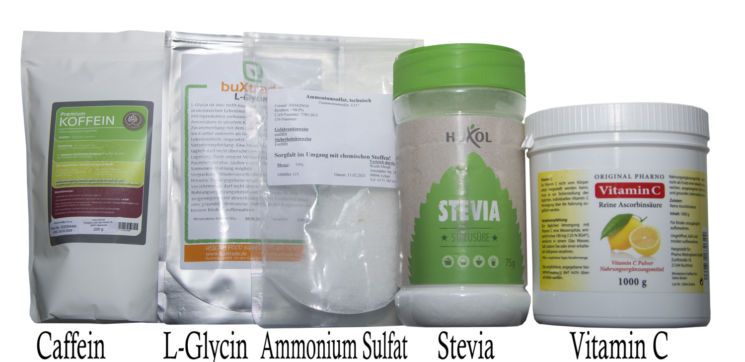How to take colorful macro photos of crystals without a microscope

A cheap magnifying glass from plastic reveals psychedelic colors under cross polarized light.
What is Birefringence?
Birefringence is an effect that causes psychedelic rainbow colours to appear in otherwise transparent materials. Such as the magnifying glass in the pictures above.
But actually, it’s a little more complicated than that:
Birefringent materials (mostly crystals) split an entering light ray into two rays that are both polarized with the vibration directions oriented at right angles to one another, and traveling at different velocities. When placed between two crossed polarizing filters, such materials appear in bright colors. With only polarized light entering the subject, one wave gets retarded with respect to the other and interference occurs between the waves as they pass through the second polarizer.
Even though you can create fantastic results just using two CPL filters, best results will be achieved with linear polarizers.


In the industry, this technique is used e.g. to locate areas of stress in plastic, but it also holds a lot of potential for interesting macro images. Especially crystalline structures make for mesmerizing abstract macro images…
The most commonly available birefringent crystal is ice, which you can produce in your own freezer:
The easiest way to create such images is to freeze water directly on a polarizing filter and place it on a light source. Now you just need to adjust the CPL on your macro lens until you see bright colors and you can start shooting.
Tip: The faster the ice freezes, the larger areas of color will be. A thin layer of hot water will freeze very quickly and make for fantastic results.

The intensity of those colors and the specific colors that appear in a crystalline structure depend on the exact orientation of the two polarizing filters in respect to each other. Colors will be the strongest when the two polarizers are at an angle of exactly 90° to each other.
Birefringent Crystals
Ice makes for a fantastic subject to start with and get a feel for such subjects, but it’s just the tip of the iceberg. 😉

The list of birefringent crystals is long and many can be found in local pharmacies, health stores, etc., or can be ordered conveniently from amazon:
Of course this is not a complete list of potential subjects, but it’s a good starting point. And of course, you can experiment with blends of different substances as well…

Vitamin C Crystals in cross polarized light

Ammonium sulfate crystals
To photograph these crystals you can use a polarized microscope, or, if you don’t have such a microscope, you can use a regular macro lens with a polarizing filter on it.
For the light source you can use pretty much anything that allows you to cover it (partially) with a polarizer. Alternatively, you can use a computer screen, as LCD screens produce polarized light out of the box.

DCIM100MEDIADJI_0469.JPG
The camera set-up above uses a Canon MP-E 65 Extreme Macro Lens, a 58mm CPL filter and a 50W LED Flood Light.
For repeatable and ideal results make sure that your glass plate is perfectly level and that your tripod screws are all fastened as tightly as possible. This is especially important when you’re attempting to shoot timelapses. With heavy lenses, such as the MP-E 65, that I’m using, or with a telephoto lens with a microscope objective, it also makes sense to secure the zoom barrel of your lens with masking tape to prevent gravity from extending the barrel over the course of your timelapse.
Experiment with different substances and subjects
As always, nothing will yield better insights than experimenting and trying things out. That’s why I recommend to try different crystals, blends and different solvents. But the results are not only dependant on the substances you use, but also on the circumstances, such as the temperature and therefore the speed of the evaporation as well as the concentration of the solution you are using.
To speed up the evaporation time you can add some alcohol to the solution. This will also help to break the surface tension of your solution and make it easier to spread on a microscope slide or a sheet of glass. Alternatively you can use a small bit of dish detergent to decrease the surface tension as well.
If the crystals are too thin they won’t exhibit colour at all, or only very faint shades of blue:

But if the thickness is right, you can create breathtaking results. The following slides show a few examples of images that you can create with this method.

Vitamin C

Ammonium sulfate

L-Glycin & Vitamin C

Ammonium sulfate

Ammonium Sulfate & L-Glycin

L-Glycin

Ammonium sulfate

L-Glycin & Vitamin C

Vitamin C

Ammonium Sulfate & Vitamin C

Ammonium Sulfate & Vitamin C

Ammonium Sulfate & L-Glycin

Ice

Caffein

Ice

Caffein
But not only translucent subjects such as plastics, ice or crystals are capable of producing fascinating colours under cross polarization; even a (blue) human iris will show interesting gradients of colour when under cross-polarized light. However, this works best for blue and sometimes green eyes and has a much less noticeable effect on brown irises:
If you’re interested in more visuals and a closer look behind the scenes please feel welcome to watch my YouTube video on this subject, too:
About the Author
Maximilian Simson is a macro photographer based in London, Ontario. You can find more of his work and creative ideas on his website and YouTube channel, and follow him on Instagram and Facebook. This article was also published here and shared with permission.



